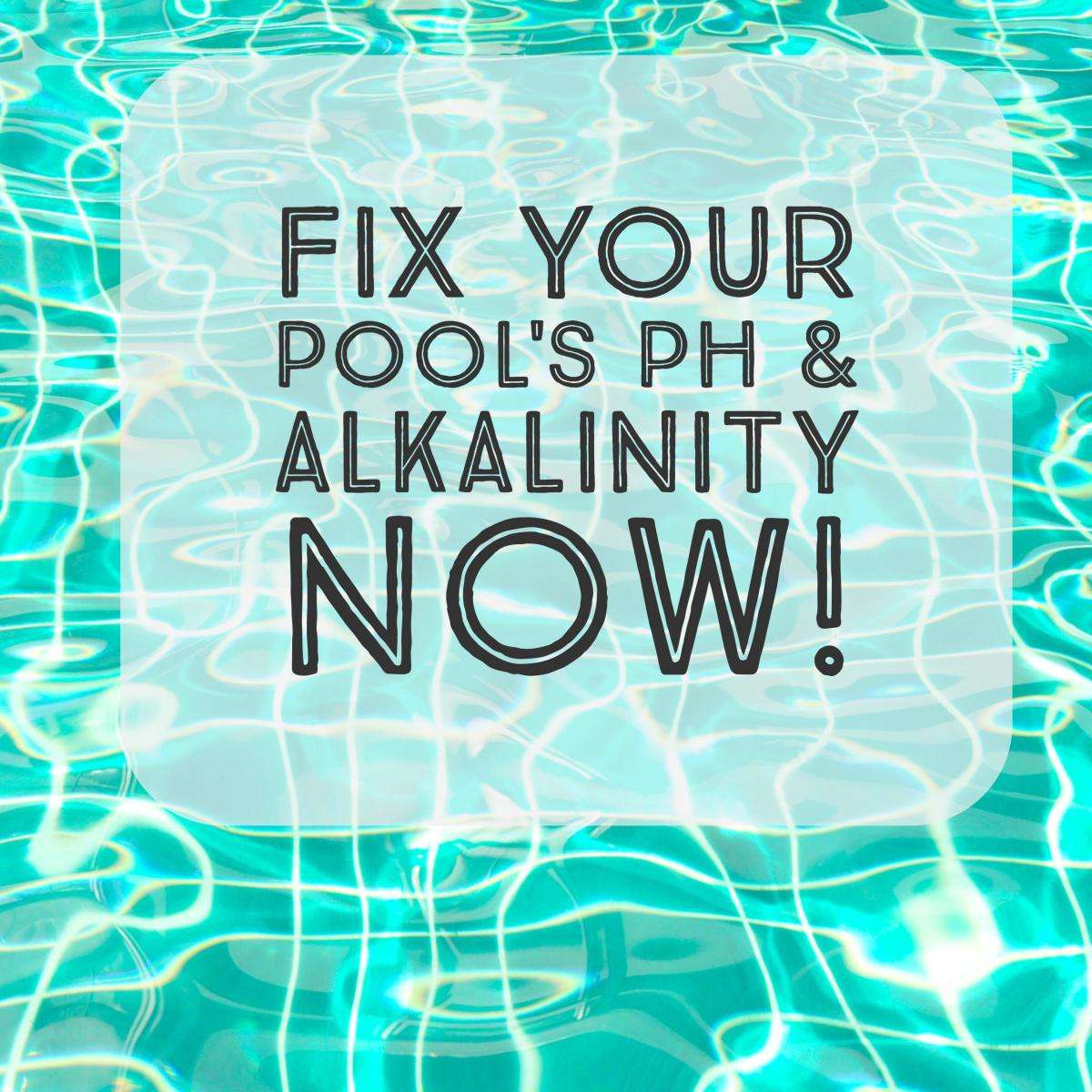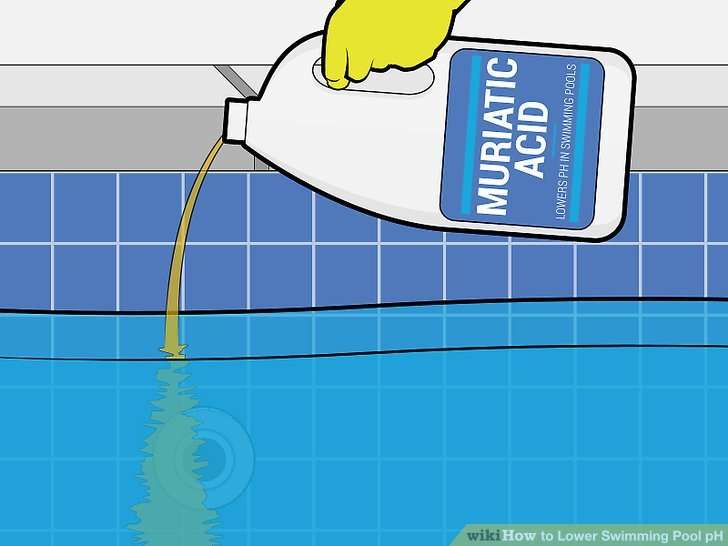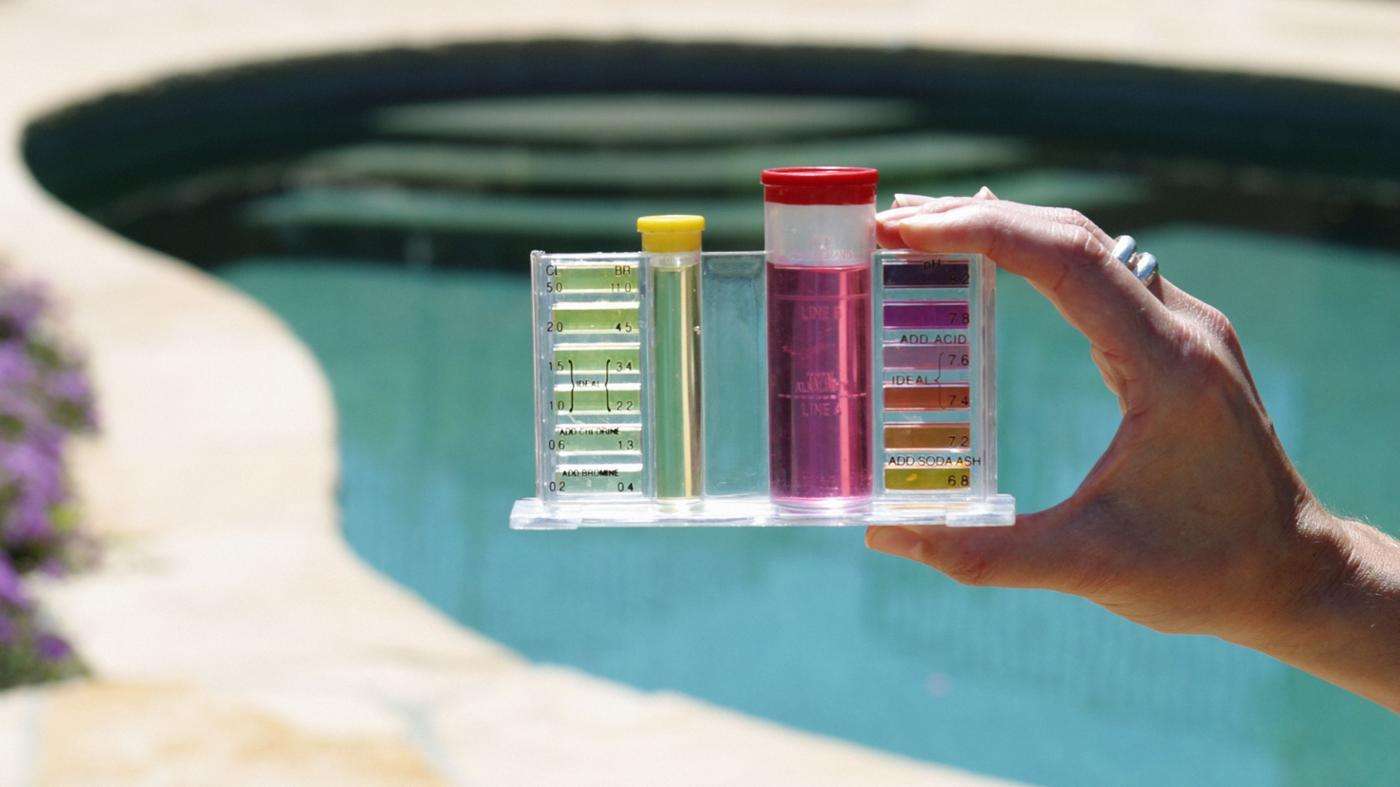How Do I Correct Bad Chlorine Or Ph Balance
Public pools have done it. Most pool owners have done it. We have done it. If you are like the majority of us, you probably have put too much chlorine into your pool. As you have probably guessed it, it is not very uncommon among the pool community. But, is too much chlorine in your pool a big deal? Lets look at why adding too much chlorine to your pool water can be dangerous and how you can fix it below.
Why Too Much Chlorine Is Dangerous
Having too much chlorine in your pool water can be dangerous. Exposure to high levels of chlorine can cause lung irritation, skin and eye damage, and provoke asthma. Not only is it bad for your health, but it can be bad for your pool due to the increase in chlorine.
High chlorine levels decrease the pH of your pools water, making it more acidic. The more acidic the water, the higher the likelihood of corrosion. This corrosion can affect metal piping, equipment, and the surface of your pool . It can also damage pool accessories and anything else that goes into your swimming pool water.
How to Detect if Your Pool Has High Chlorine Levels
While many people think they can smell or feel when their pool has too much chlorine, the only way to know if you have high levels of chlorine is by running a test. Ideally, you should be testing your chlorine level every day, especially if your pool is left uncovered for long periods.
Here is how to check your water using a chlorine test strip.
Natural Ways To Lower Pool Ph
There are a couple of natural household products that could potentially be used to lower your pools pH.
Vinegar: Wondering how to lower pool pH with vinegar? Ordinary household vinegar could in theory be used to lower the pH of your pool. The pH of vinegar is about 2.5, which is quite acidic when compared to your pool water.
Household vinegar is very weak though , so you would need quite a bit to lower pH.
And in addition, using vinegar would cause a reaction leaving acetates in the pool water, which is not desirable. Its generally not desirable to add extras to your pools water.
Muriatic or Hydrochloric acid is a far better choice for lowering pH and alkalinity.
Baking Soda: Baking soda differs from the previous two natural remedies in that it has a higher pH of 8.3. If your pools pH is above 8.3, baking soda will bring it down to approximately the same value.
However, its more beneficial to use baking soda when looking to raise pool pH and alkalinity levels. You need approximately 1.5 lbs per 10,000 gallons of water to raise the alkalinity by 10 ppm.
Low Ph And High Alkalinity
Although they tend to affect each other in the same direction, youll sometimes end up with low pH and high alkalinity. Usually, this issue pops up when you add too much cyanuric acid to your pool.
Using a chlorine stabilizer in your outdoor pool is important, but using it incorrectly will negatively affect your overall water chemistry. You may also notice a weird imbalance because alkalinity and pH are affected by chemicals at different rates, so even when you make adjustments, one may rise more than the other.
Don’t Miss: Does Costco Sell Pool Chlorine
Aerate The Pool Water
Sometimes, adding alkalines to your water still doesnt raise the levels sufficiently.
In this case, its time to aerate the water thoroughly. This is a lengthy process that could stretch out over a few days. One method of achieving it is to activate water features so that jets hit the surface of the water. An alternative method is to go all-in and add some aeration pipes.
If you follow this guidance, low pH levels in your pool should be no further cause for concern.
What causes this situation to happen in the first place, though?
With The Balance Restored All Is Well

Knowing how to lower pH levels is an important skill for every pool owner. However, if you dont have the time or if its too much to handle,;
We can handle everything from balancing pH levels to mechanical repairs, pool cleaning, and maintenance. Well make sure that your swimming pool is always in tip-top shape!
Also Check: What Causes High Cyanuric Acid In Pools
How To Lower Ph In Pool With Vinegar
Vinegar has a 2.5 pH level in it and although it is a weak household product to decrease the pH level of your pool water but it can help you if the pH level needs minor changes.
You can do it in the following manner.
The vinegar can cause acetates in pool water that is why it is suggested not to use. Muriatic Acid is a good option to decrease the pH level.
S To Lower Ph And Ta Using Muriatic Acid
Also Check: How To Raise Cyanuric Acid In Swimming Pools
Does Ph Effect Chlorine Effectiveness
Chlorine is known by many as the number one chemical used for maintaining a swimming pool. It works its magic by disinfecting microorganisms.
For chlorine to do its job, it needs to be exposed to the right environment. Its ability to effectively kill bacteria depends on optimal pH and alkalinity levels.
A high pH can cause cloudy pool water; while a pool with low pH means the amount of available chlorine is lower. In both instances, an incorrect pH level will hinder chlorines effectiveness.
Why Does Your Pool’s Ph Need To Be Balanced
Controlling the pH is important not only for comfortable swimming, but also for the long life of the materials that make up the pool.
Considering that the pH of teardrops from a human eye is about 7.5, having a pH as close to that number as possible will make swimming more comfortable. As a pool service tech, I sometimes hear people complain that swimmers’ eyes hurt because the chlorine level is too high. But in these cases, an unbalanced pH level, not a high chlorine level, is almost always the problem.
Recommended Reading: Is Jones Beach Pool Open
How To Use Muriatic Acidto Lower Pool Ph
As a strong acid, this chemical is a very effective way to lower the pH of your pool and lower total alkalinity. Muriatic acid can also be used to clean the pool surface but be careful, its a very powerful chemical.
How to Use Muriatic Acid:1. Test your pools alkalinity and pH .
2. Measure the required acid and dilute in a large bucket of water in a 10:1 ratio. This will avoid any backsplash of pouring it directly into the pool.
3. Pour the solution into the deep end of the pool near the jets. Make sure the pump is circulating the water.
4. Wait at least 5 hours, preferably overnight before retesting your pools alkalinity & pH to determine if more acid is required. Repeat steps 2-4 as necessary.
5. Once you achieve normal alkalinity , check the pH again. If pH drops too low, you can simply aerate the pool or use pH increaser to get it back to optimal ranges.
**Use acid with extreme caution as this product can burn your skin. It will also stain decks and the pool surrounds if it splashes on them.**
How To Lower Ph In Your Pool
- |October 29, 2020
Owning a swimming pool comes with plenty of perks, but it also requires a maintenance schedule that can be frustrating if not followed regularly.
Youll have to learn how to lower pH in your pool, in order to maintain the waters proper pH level at all times.;
If it becomes unbalanced , it can create a host of problems for your pool and anyone who enters it.
Skip to:
Don’t Miss: Should You Seal Concrete Pool Deck
Keeping Ph Levels Balanced
You have now successfully adjusted the pH of your pool water but how do you ensure it stays in the normal pH range?
Usually when the water is correctly balanced and your filtration system is running effectively the water pH should be stable.
If the pool water pH does fluctuate unexpectedly check the total alkalinity of the water as a high reading will cause pH the change rapidly.
Heavy rain can lower pH as the rainfall is slightly acid so always check your pool after a storm. Or install a pool cover to prevent rainwater entering the pool.
Pool chemicals are dangerous and reactive.
Please ensure that all pool chemicals are stored in a cool, dry location.
Please; ensure the chemicals are kept out of the reach of children.
Always wear gloves and protective clothing when handling chemicals.
Always carefully read the instructions on the packaging.
NEVER MIX CHEMICALS TOGETHER
You should never mix pool chemicals together. They may react leading to fire, explosion or release of toxic chlorine gas. Even mixing dry chlorine with liquid chlorine may cause an explosion.
NEVER ADD WATER TO CHEMICALS, ALWAYS ADD CHEMICALS TO WATER.
You must never add water to chemicals. The chemical may react with the water causing an explosion or the release of toxic chlorine gas that has the potential to damage your lungs.
Add The Sodium Bisulfate

Once you measure the ideal amount, pour the powder into the pool near the return jets. Avoid adding sodium bisulfate near the skimmer.
Some manufacturers advise pre-dissolving sodium bisulfate in a bucket before adding it into the pool. If you pick this option, ensure you add the dry powder to water and not the other way.
Afterward, turn on the pool to evenly distribute the sodium bisulfate granules. If you dont have a pool pump, you can use a paddle to circulate the water manually.
Read Also: Can Lice Live In Chlorine Pools
Tips For Keeping Ph Levels Balanced
Although pH is a pretty unstable factor in your pool chemistry, it’s possible to keep it balanced most of the time. You just have to stay on top of a few pool maintenance tasks.
>>Read: How to balance your pool water
- Test your pool chemistry twice a week. Or if you’ve had issues with pH balance, test it every day until you get it under control. This may seem like a giant pain the in you-know-what, but it only takes a few minutes of your time, versus the hours you could have to spend correcting problems.;
- Keep your pool clean. Since even things like dirty leaves can affect your pools pH balance, keep it as clear from debris as you can. Use a pool skimmer to clear out the junk every day. Its a great way to make the kiddos earn their allowance!
- Check your filtration system regularly. If your pool filter is doing its job, it will take a lot less elbow grease to keep the water clean and balanced.
- Shock your pool regularly. Most experts recommend once a month, but you should do it more often if during times of high usage or weather changes. Shocking the pool helps restore all the chemistry levels to normal.
Solutions For Dealing With Too High A Ph Level
If the pH level of your pool exceeds a value of 7.6, it must be lowered in due time. The solution is to add pH minus, an acid that will bring down the pH level.
This;pH minus;always comes in powder form and has to be spread over the water surface. However, first dissolve the granulate in a bucket filled with water. In this way, the acid cannot cause any damage to the lining.
The correct dosing of this pH minus depends on the total water volume and the current pH level. The schedule on the packaging helps you determine the dose to be used for lowering the pH level.
Read Also: How Do I Vacuum My Intex Pool
The Role Of Chlorine In Pool Health
The most common chemical used to oxidize and disinfect swimming pools is chlorine.
This chemical works in 2 distinct ways:
If pH levels are unbalanced, the chlorine wont work properly, resulting in unsanitary pool conditions.
How To Lower Ph Balance In Your Swimming Pool
Balance in all things. Its as important in life as it is for your swimming pool. A perfect example is your pools pH.
As a rule, you want to maintain a range of 7.4 to 7.8. In a;previous article, we talked about how to raise the pool pH level if its too low. In this post, well show you how to lower pH if it becomes too high.
Lets dive in!
You May Like: Can Lice Live In Chlorine Pools
You Recently Shocked Your Pool
Shocking your swimming pool refers to the process of adding chemicals usually chlorine to stabilize the pH level.;
Shocking breaks up combined chlorine killing algae, bacteria, and other pathogens and it rapidly increases your chlorine level.
Combined chlorine is essentially chlorine thats bound to ammonia and nitrogen. Translation: its an ineffective sanitizer when in this state.;
Adding shock breaks up the combined chlorine and creates an increase in free chlorine. This increase can spike your pools pH level.;
Pool shock is available in both chlorinated or non-chlorinated versions. If your pool already has a high pH level, using chlorinated shock will only make things worse.
What Is The Ideal Ph Level For Swimming
Can You Swim in a Pool with High pH
Chlorine is a chemical added to pool water to get rid of germs. The right levels of pH should be obtained, however, to protect the eyes and skin from harsh chemicals.
According to the Centers for Disease Control and Prevention, the pH level considered to be ideal and safe for swimming ranges from 7.2 to 7.8. This range matches that of our body pH levels, so the water wont cause problems in the body as we swim.
Don’t Miss: Jones Beach Pool Location
Summary Of Balancing Ph And Ta
– In any case, you get your TA levels lower than recommended levels that are between 80 and 120ppm but pH level is OK, use alkalinity increaser to raise TA back.;
– If you have low pH but the TA level is OK, use borax to raise your pH without raising your TA levels.;
– Use muriatic acid to lower both pH and TA when high. Use borax to help you raise pH when TA level is still high and you need to add muriatic acid so that you don’t get your pH lower than 7.0.
– Finally, it’s not possible to have low pH and high TA in the same water, or high pH and low TA in the same water. If you have one of the two situations, something must be wrong with your test kit and you need a better one.;
Effects Of A High Ph Level

Why is high water pH level, or pH above 7.8, bad for your swimming pool? For starters, its unhealthy for both the swimmers and your wallet. Here are some of the problems you might have to deal with:
- Youll hear complaints about stinging eyes, dry skin, and sticky feeling from the swimmers.
- Youll notice that the pool has become hazy or cloudy which isnt very appealing to those who want to swim.
- Chlorine becomes less effective at higher pH levels. The cost of adding more chlorine is more expensive than test kits for pH. Low chlorine promotes bacteria and;algae growth.
- Alkalinity makes the water hard;and can cause scale formation from calcium deposits. Scale buildup will clog your filters and pipes. This will put a strain on your pool equipment and cause various problems such as leaks and motor failure.
Also Check: Filling Pool With Well Water With Iron
How Often Should You Put Baking Soda In Your Pool
There is no hard and fast rule regarding how frequently you should use baking soda in your pool. Just use it as necessary to maintain the correct pH and alkalinity levels after testing your pools water..
You will probably need to use it more frequently during peak swimming season when your pool gets used most often and less so during the off-season.
How Much Acid Should I Add To My Pool
This depends on how high your pool’s pH is and the size of the pool. If you are using test strips, it’s usually hard to determine exactly how high the pH level is; you just know it’s high. A better test kit, or a DPD drop test kit, will use phenol red to give you a better idea of your true pH reading. Some better test kits include an “acid demand” test to help calculate a more precise dosage.
If you have a pH reading of 7.8 or higher, and an average size in-ground pool, you should add 1/4 gallon of muriatic acid, and re-test after the water has circulated for an hour. If you have a smaller pool, or an above-ground pool, you would start with one cup of acid, and then re-test and add more if needed. If you have a spa, we are talking only capfuls at a time. Very little acid is needed to adjust pH in a spa.
For a more exact idea of how much acid to add, see the table below or use a pool calculator, which can be found online, that will give you an amount based on estimated pool volume and chemistry.
Don’t Miss: Mandalay Bay Pool Hours Winter
